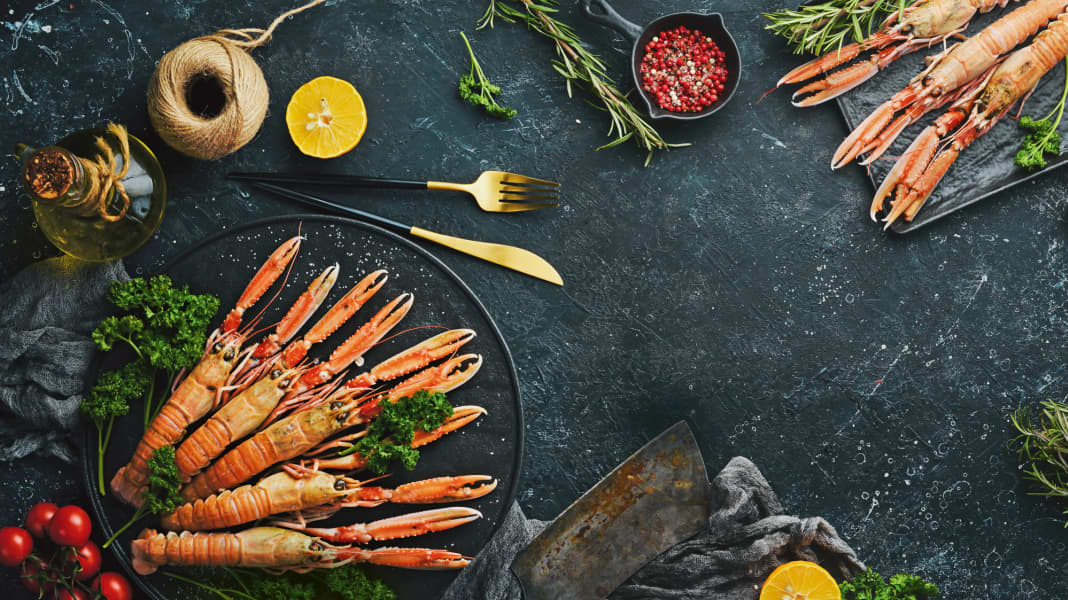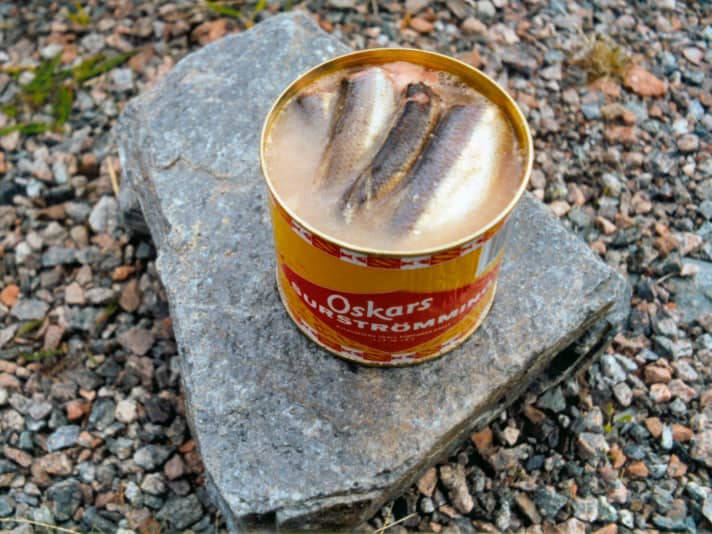Baltic Sea tips: Culinary highlights - 10 restaurants in Germany and Denmark
YACHT-Redaktion
· 02.01.2023

1st "Noma", Copenhagen- the best restaurant in the world
"Have they gone megalomaniac at YACHT?" That's what some people who know what we're talking about might think. Because let's be very clear up front: three Michelin stars, the highest possible rating, which means reservation times months before a visit and a menu that costs around 430 euros per person - excluding drinks, of course.
But, and this is a resolute but, "Noma" is the ultimate gastronomic stage and, together with "Geranium", also based in Copenhagen, the only one on the Baltic Sea that can be reached by boat. René Redzepi's "Noma" has even been voted the best restaurant in the world several times. If you have the necessary change or want to fulfil a lifelong dream, you can spend an evening there on a very special culinary journey. The meals, which range from 15 to 20 courses, are truly small works of art that often do not reveal what exactly they are at first glance. The kitchen crew works with fermentation, moulds and all kinds of other exotic techniques. What all the dishes have in common, however, is that they want to reflect Nordic cuisine, which means that the ingredients all come from the Nordic-Scandinavian region.
Accordingly, the food at "Noma" is divided according to the seasons. In spring and winter, it's mainly seafood on the plate, while autumn is game and meat season. In summer, on the other hand, when the sailors are more likely to come, vegetables are probably a surprise to many. The menu is then often almost exclusively vegetarian.
After being closed for almost two years, the restaurant moved to Refshaleøen in 2018. This is the former industrial area to the east of the main harbour, which has developed into a trendy neighbourhood. The ambience at Noma is surprisingly informal; "Come as you are" really does apply here.
2. "Salig Simons Gaard", Svendborg- Five courses at their best, but without being spoilt for choice!
If "Noma" is too upmarket and expensive for you, but you still want to eat something special, this restaurant in a simple old half-timbered house in the centre of Svendborg is the place for you. The team has dedicated itself to French bistro cuisine, and so at lunchtime you can enjoy classics such as moules marinières, steak tartare or a special onion tart for normal money.
The hit, however, is the original evening menu, which changes seasonally. However, there is nothing to choose from. Five courses are served, often with seafood components, but also meat, accompanied by a great wine pairing or special juices as a non-alcoholic alternative. At 80 euros, the whole thing comes at a price, but to be honest, anyone who goes to a restaurant in Denmark usually spends 30 to 50 euros per person including drinks anyway. Everything is much more expensive in Denmark.
3rd "Algot fra havet", Anholt- Lobster days on Anholt
When the red fishing boat returns to the harbour early in the morning from its nightly trip, experienced Anholt sailors know what to do: get out of the bunk, grab a plastic bag and 100 crowns and then ask the fisherman for two kilograms of jomfruen lobster, or Norway lobster. They go into the pot in the evening - delicious! However, their shells must be removed before they are eaten. Norway lobster, also known as Norway lobster, is extremely popular with our Scandinavian neighbours. In many places, entire festivals are held in its honour, for example on Læsö or Anholt. The preparation seems simple, but the timing of cooking and quenching is crucial. If you want to save yourself the work, you can enjoy the lobster in one of the nearby restaurants.
4. "Zum Klausner", Hiddensee- in the shadow of the thorn bush
Not far from the striking beacon in the north of Hiddensee lies the restaurant "Zum Klausner", which unexpectedly rose to fame a few years ago. In 2014, it was at the centre of Lutz Seiler's award-winning novel "Kruso". The book is about events on the island during the collapse of the GDR. At the time, dropouts worked at the "Klausner" as seasonal workers; during the GDR era, Hiddensee was considered the last bastion for intellectuals and dissidents. At first glance, not much has changed in the "Klausner". The furnishings are more rustic and down-to-earth, and the large garden restaurant is just as cosy as ever.
5. "Enø Bageri", Karrebæksminde- Sensational organic ice cream from the bakery
Klaus Nielsen and his team use organic milk from a neighbouring farm and a choice of fresh berries from the region, real vanilla or quality chocolate to make the popular ice cream for which his bakery is almost better known than for its bread or cakes. In summer, there are often long queues outside the blue building at Ved Broen 6, and the seats on the other side of the street are completely full. There you can sit by the canal that leads into the Karrebæk Fjord in the south-west of Zealand near Karrebæksminde. Ice cream and a view - on sunny days, both are a pleasure.
6th "Falsled Kro", Funen- Large kitchen in the Little Belt
This gastronomic gem, which is so far away from the main fairway, has been holding its own for many years. Situated in a tiny village on the west side of Funen and east of the picturesque Helnæs Bay, the "Falsled Kro" is a must-visit location for lovers of the Danish South Seas and top-quality local cuisine. And yes, a visit by boat feels even more like a discovery. However, the small harbour, which is just a stone's throw away from the old inn, offers no more than two metres of water depth in most places, especially those for guests. And before that, there are a few well-buoyed shallows to pass.
Once you arrive, you can look forward to culinary highlights at the "Kro" without reservation. Table reservations are mandatory, and those who choose the eight-course signature menu must order it at least one day in advance (approx. 300 euros). However, the four-course menu is also worth a visit (approx. 140 euros), although it is more suited to small appetites. The 16th century inn also offers overnight accommodation.
7th "Butt", Warnemünde- High-end cuisine with a view of the boat
A Michelin star adorns the top restaurant in the "Hohe Düne" hotel. And quite rightly so. What chef André Münch brings to the plate causes small and large explosions of flavour - whether it's an Atlantic turbot, a piece of Wagyu beef or one of the fantastic dessert creations. The wine accompaniment to the menu is highly recommended (four courses approx. 240 euros). Perfect as the highlight of a Baltic cruise if you are heading for the Hohe Düne marina anyway.
8th "Felix", Glücksburg- Spoilt for choice on the fjord
Glücksburg on the eastern shore of the Flensburg Fjord offers two first-class restaurants: Dirk Luther's "Meierei" in the "Meierhof" hotel (two Michelin stars) and the "Felix" in the "Strandhotel" very close to the water. The latter exudes Scandinavian cosiness and has a somewhat more down-to-earth menu, but also offers a high level of culinary artistry that combines regional dishes with international accents. Great: venison medallion, saddle of veal on truffle jus or a Label Rouge salmon. Five courses for 99 euros.
9th "Freustil", Binz- Baden finesse in the far north
Michelin-starred chef Ralf Haug has travelled from the Black Forest to Rügen. In the Baltic seaside resort of Binz, he conjures up fresh, creative compositions from Wednesday to Sunday that you won't forget in a hurry. The ambience in "Freustil" is casual, the service personalised, the menu highly seasonal and always good for a surprise. If you're looking for a winter retreat, this is the place for you. Haug cooks at the "Vier Jahreszeiten", where you can enjoy exquisite accommodation. Sassnitz harbour is only a 20-minute taxi ride away.
10th "Zur Fähre", Stralsund- Probably Europe's oldest harbour pub
Stralsund's Fährstraße 17 has been the place to go for thirsty citizens and sailors since 1332. The pub survived city fires, floods and world wars. During the GDR era, people kept to themselves and walk-in customers and tourists were kept out with a cordon. It was not until 1999 that the "Fähre" opened its doors to the public again. The cult caraway Stralsunder Fährwasser should be savoured with caution, it is said to have torn many a sailor apart here. Predicate: A pub that you have to see and experience!
Bonus gastro tip
Surströmming - a delicacy as a test of courage

The northern Swedish fish speciality surströmming (sour herring) is made from Baltic herring caught in spring, which are fermented in brine for months to give them their unique flavour. The salty, intense flavour is accompanied by an extreme, stinky smell that is not to everyone's taste. Originally, this fermentation was used to preserve the flavour for long voyages, but today it has become a traditional cult food that Swedes eat in late summer in convivial gatherings in the open air. Preferably with plenty of alcohol or a glass of milk. As the fish continues to ferment in the packaged tin, some airlines prohibit its transport due to the risk of explosion. The stinking fish gained international fame on YouTube, where there are countless videos of recreational gourmets retching and vomiting.
Tips for tasting:
- Never open the can indoors
- Breathe through your mouth
- Rinse the fish well
- Keep your schnapps and toothbrush to hand
- Serve on a slice of bread (Tunnbröd) with crème fraîche, jacket potatoes and onions
- Above all: Don't offend anyone who hasn't eaten surströmming themselves - the subsequent bad breath is persistent!

